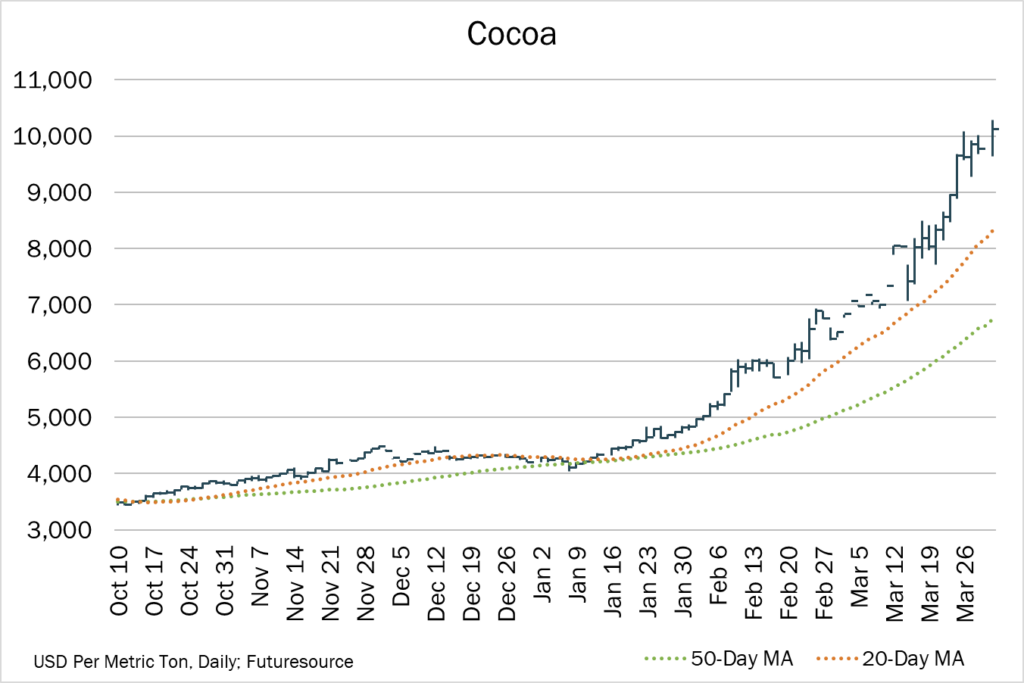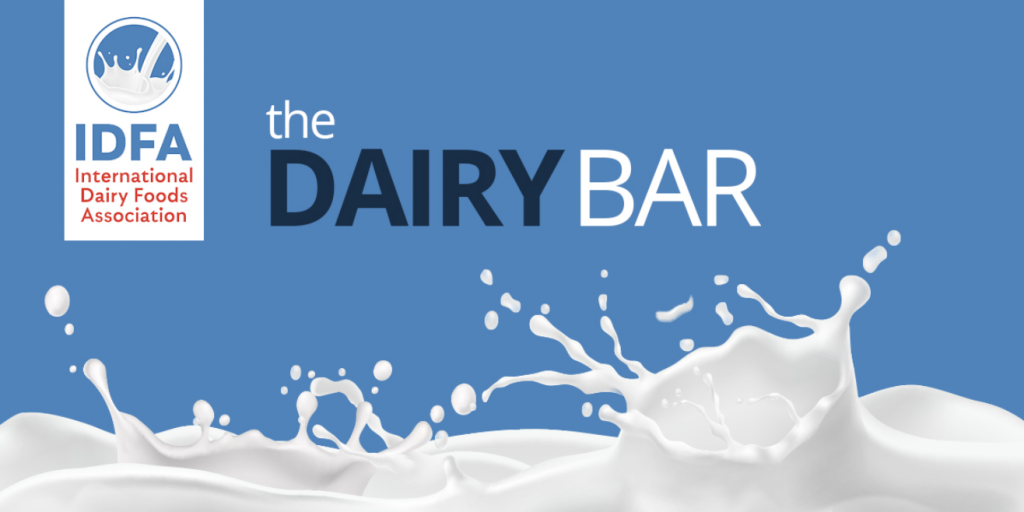Read the latest issue of The Dairy Bar, a bi-weekly report from IDFA partner Ever.Ag. The Dairy Bar features spotlight data, key policy updates, and a one-minute video that covers timely topics for the dairy industry.
The Dairy Bar: HPAI Impacts on Dairy; The Bitter Taste of Expensive Cocoa; and Easter Spending in a Minute!

Quick Bites: The Bitter Taste of Expensive Cocoa
- Cocoa prices have been on a steady climb over the past two years, driven by production shortfalls and supply chain disruptions. Futures surged even further in March, reaching $10,000 per ton, a level more than twice the previous record amid worsening growing conditions.
- Much of the world’s cocoa – an estimated 53% – grows in Ghana and Ivory Coast, where farmers in different areas are experiencing drought and heavy rainfall. Soggy fields are worsening the spread of black pod and other diseases, resulting in rotted pods and dead trees. And, with governments setting cocoa prices ahead of time, farmers have yet to receive the needed profits to fend off disease and improve their crops.
- That’s likely to have knock-on effects for dairy processors. While makers of chocolate candy and ice cream haven’t yet felt the sting of higher cocoa prices, it’s likely to hit in the next six to 12 months, per Bloomberg Intelligence. To cope, some companies are reducing product sizes and pushing goods that use less cocoa.
- The pinch could also lead to plant closures. Facilities in Ghana have shuttered intermittently, Bloomberg reported, while closures and layoffs are planned by major chocolate processors and suppliers.
Today's Special
- USDA recently identified a disease impacting dairy herds in the Southwest as Highly Pathogenic Avian Influenza (HPAI). The origin of the disease is being traced to wild birds, though additional testing is underway. While initially detected in Texas, New Mexico and Kansas, positive tests have since been identified in Michigan and Idaho.
- This illness appears to predominately be affecting mature, lactating cows. Among affected dairies, roughly 10% of cows become infected. Cattle infected with HPAI display flu-like symptoms in addition to having decreased milk production and appetite. No disease-related mortalities have been reported at this time, and milk loss appears minimal.
- Questions regarding HPAI still remain as government agencies and public health officials are continuing to investigate. No milk from infected cattle has entered the system and, in a press release issued on March 25, the USDA said “at this stage, there is no concern about the safety of the commercial milk supply or…a risk to consumer health.” No herds are being quarantined, but some states have closed their borders to Texas dairy cattle. Dairy producers across the nation are also encouraged to adhere to biosecurity practices.
- While reports suggest producers are culling affected cows, dairy cattle slaughter remains in line with five-year seasonal lows. According to the latest USDA data, dairy cattle slaughter totaled 57,000 head for the week ending March 16, down 11.8% on the year and -3.4% week over week. As of February, the U.S. cattle herd was down 89,000 head year-over-year.
- IDFA has developed guidance for members and partners here.

